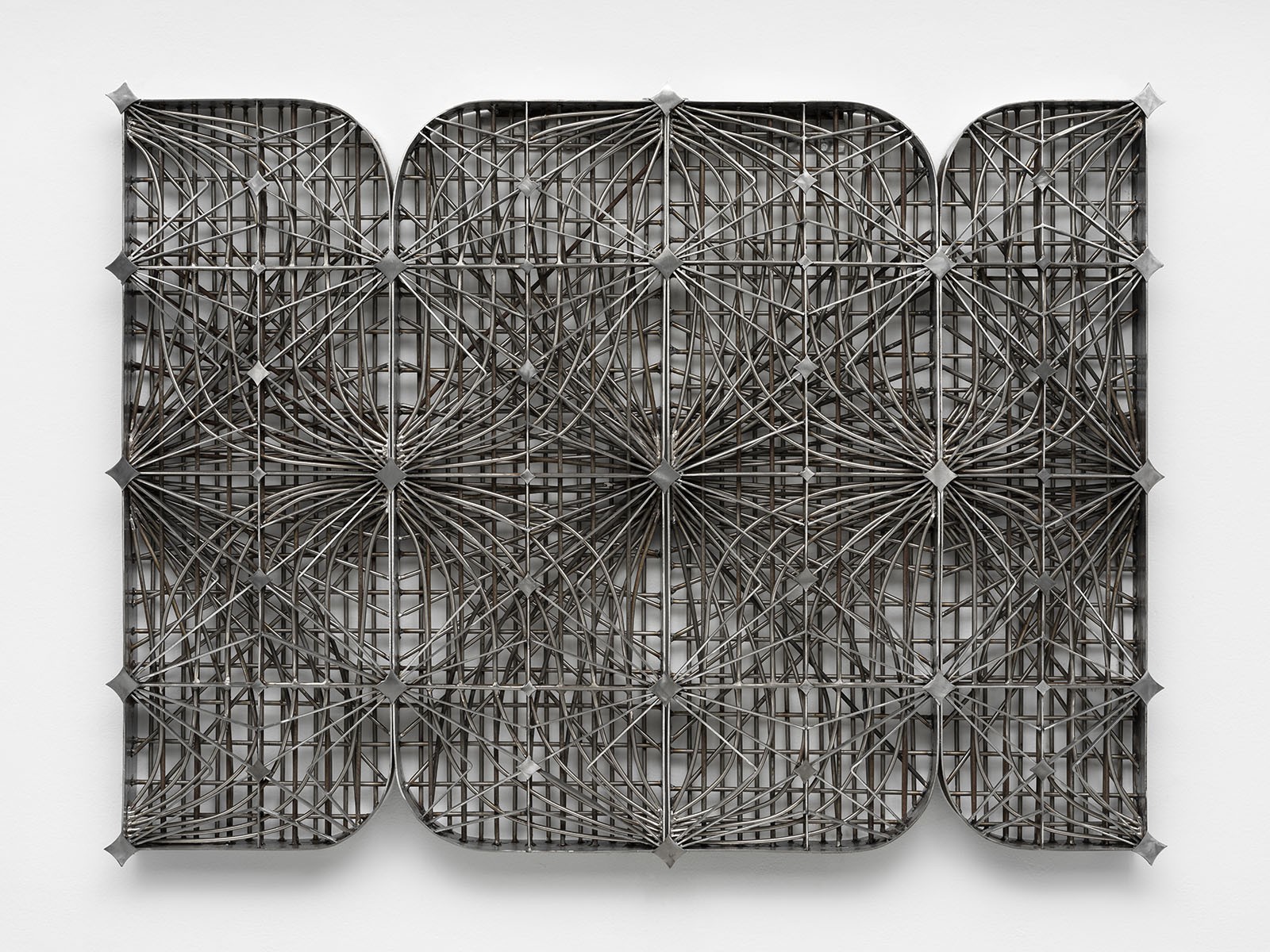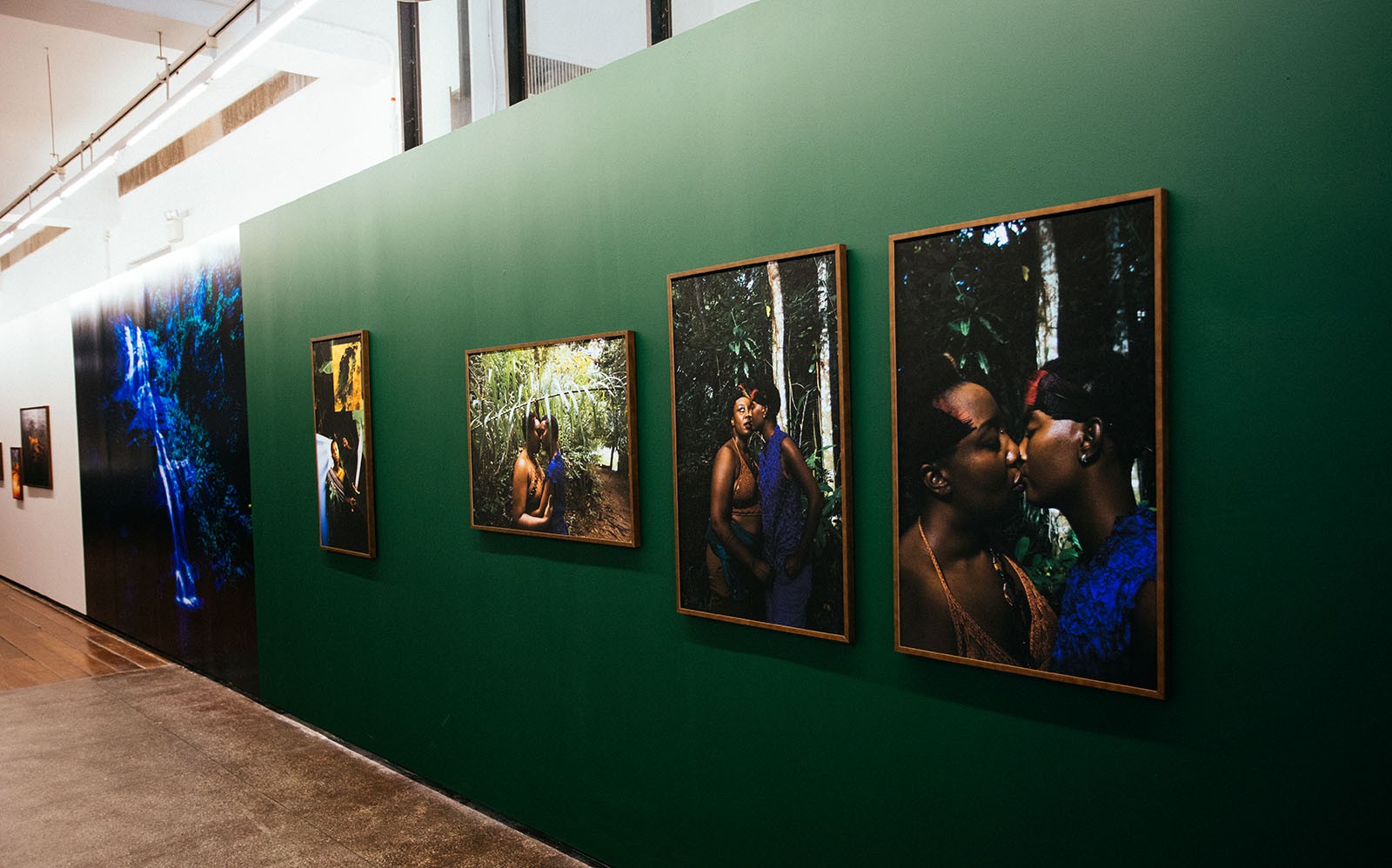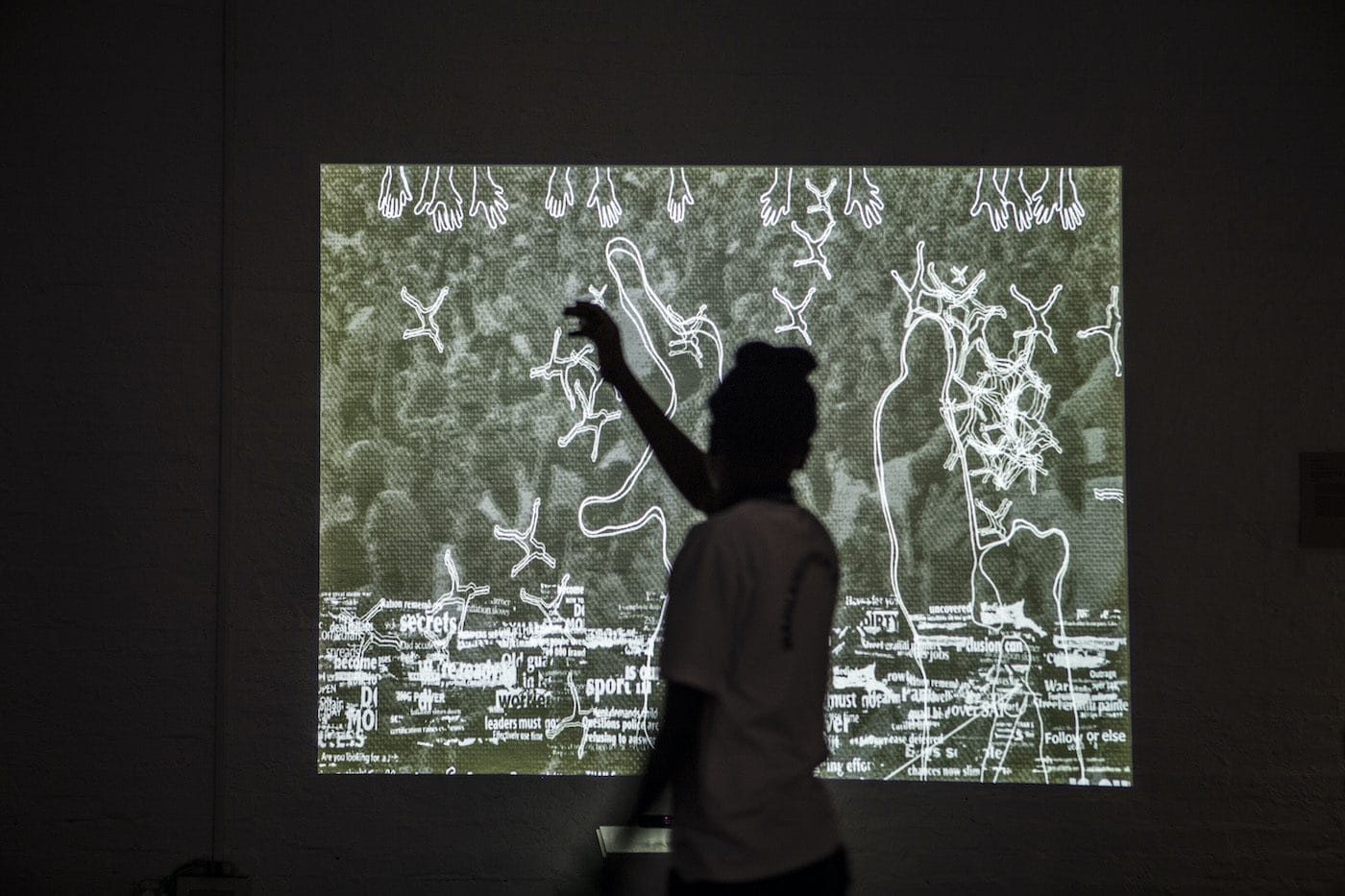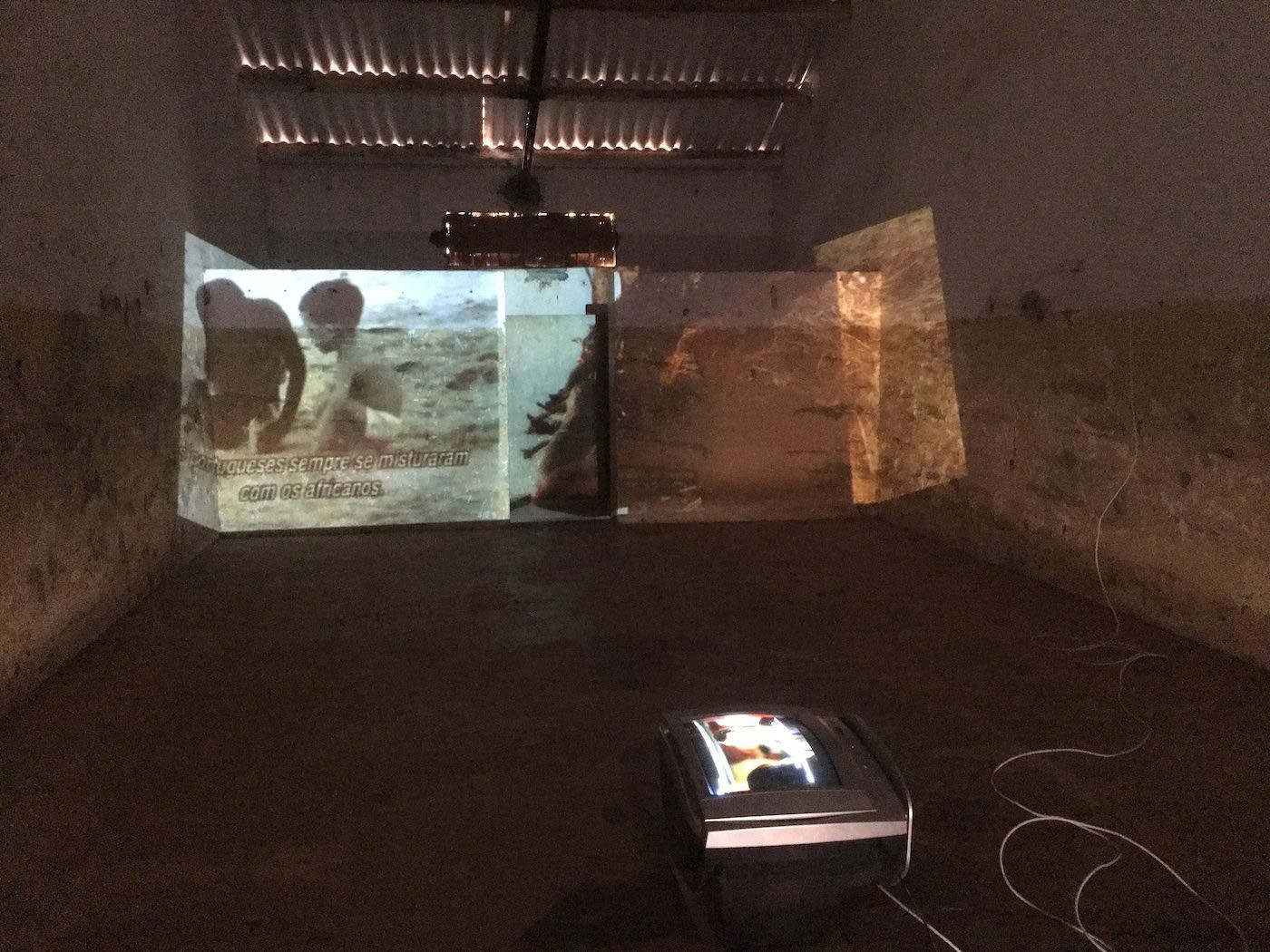Lunga Ntila Seeks GOD AMONG US in Her Body of Work
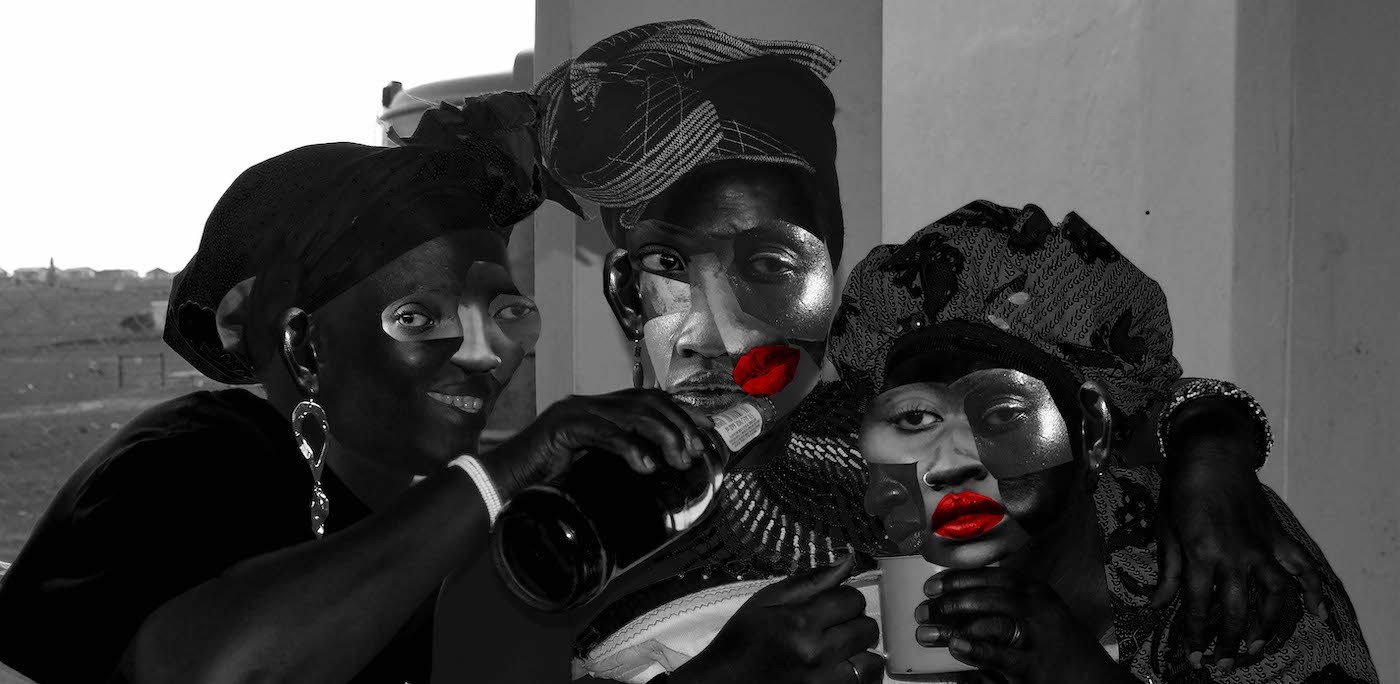
09 November 2021
Magazine C& Magazine
Words Elisa Pierandrei
6 min read
Ahead of AKAA Paris we speak to the South African artist about her multiple identities, unfamiliar surroundings, and the symbolism of bees.
Contemporary And: Your portraits of a deconstructed self offer an interesting perspective on who you are. Could you elaborate on that idea?
Lunga Ntila: I am fascinated about how we as humans can change if we allow room for it. I was born in Johannesburg and grew up partly in Pretoria. My parents are diplomats, which luckily me exposed to many different cultures and perspectives, spanning Germany, Benin, and the Netherlands, before I came back to live and work in my hometown in 2016. Every time I moved to a different country, I felt like I had to mold myself into a different culture and re-adjust my identity to unfamiliar surroundings. Coming back home finally gave me the opportunity to get to know my old environment and roots, to explore and expand who I am. I eventually found myself in a space where I could settle. I had time to get to know myself in the context of being South African with my people, picking up from where I had left off.
[cand-gallery image-no=1]
C&: Why did you want to be an artist?
LN: I’ve been curious about the art world since I was young. With time and more access to information, I found photography to be the appropriate mode of articulating and expressing myself. I wanted to make a difference, as cliched as it sounds. And I realized that it was easier to make a difference within myself rather than trying to change the world around me. In doing so I somehow hope to influence others to do the same.
C&: Could you elaborate a bit on your process? What photographic archives did you use in your latest body of work: GOD AMONG US!?
LN: I create my digital collages using archival photographic material. My latest body of work consists of a series of pictures I took at my cousin’s initiation ceremony, about five years ago, in Engcobo, in the Eastern Cape Province. The work is based on these pictures that I took, wandering around with my camera, of a celebration of the transition from boy to man. The ritual instills good moral and social values, a process that is known as ukwaluka within the Xhosa community. Regardless of being a woman, I related a lot to the concept. GOD AMONG US! was conceived to create a narrative that linked that celebration of life and the transformations that are happening in my life. Relating to the indigenous knowledge system ukuzilanda, my previous body of work centered around recovering from situations where I had made mistakes or lost a part of myself. I wanted to show the growth that had taken place between my past and present, which is also reflected in the mediums I used. The current work shows me being in between places, in transit, stepping into a world of the familiar yet unfamiliar. It gives more context to who I am and indicates the different dimensions I exist within.
[cand-gallery image-no=2]
C&: There is a specific use of colors in your photographic language, and it has become more significant in your latest body of work.
LN: I use three main colors: black, white, and touches of red. The black and white shows the viewer the confidence that I have in my work. It draws the attention to details that I want to highlight. I play with red as it marks a connection to this other dimension: it pops up on exaggerated hats and voluminous, prominent lips. It also just adds to the overall aesthetic of the work!
C&: What is the mythological or spiritual aspect you refer to in GOD AMONG US!?
LN: There isn’t a specific one, but my conception of the divine is inspired by my understanding of African spirituality and mythology. The intention is to appeal to all and make others understand how God can manifest in different ways: in human beings, in a word, in flowers. God is among us!
[cand-gallery image-no=4]
C&: In the same body of work, you place human figures in close relationship with animals, insects, flora, and fauna.
LN: Initially this was just to expand the composition. I intended to pay tribute to nature and to how God manifests within it. I had a special focus on bees: my mother tells me that bees symbolize my grandmother’s side of the family – oMabhayi. They sometimes appear to let you know that you are protected or they just come as visitors. When they arrive as a swarm, they are usually relaying a message. By including them in my work I am acknowledging that my ancestors have surrounded and assisted me in reaching for my dreams.
C&: Tell us about your photo book Ukuzilanda.
LN: The publisher, Dream Press, reached out to me in 2020 and asked me about the possibility of making a book together. I was very excited about that – I thought it would be a nice way to make my work more accessible. It also became a nice way for me to archive some of my favorite moments from when I was introduced to the art world. Ukuzilanda was a body of work that anchored me and opened up many doors to my artistic life.
[cand-gallery image-no=3]
C&: BKhz Gallery from Johannesburg is presenting your work at this year’sAKAA Art and Design Fair in Paris, its first participation in an international art fair outside South Africa.
LN: I am grateful to be participating – it will be my first time exhibiting in Paris. The city has a rich artistic history and I am very excited to be in such creative surroundings. And I am excited to have access to another demographic that could potentially add in diversifying my audience.
Lunga Ntila is a photographer and artist born in Johannesburg, South Africa, in 1995. Her work explores themes of identity, displacement, reconciliation and healing. In 2019, Ntila’s work was featured at the Investec Cape Town Art Fair, and Design Indaba recogni her as an emerging artist to watch.
Elisa Pierandrei is a journalist and author based in Milan. She writes and researches stories across art, literature, and visual media. Over the years she has gained an interest in the Middle East, Africa, and the diasporas.
Read more from



